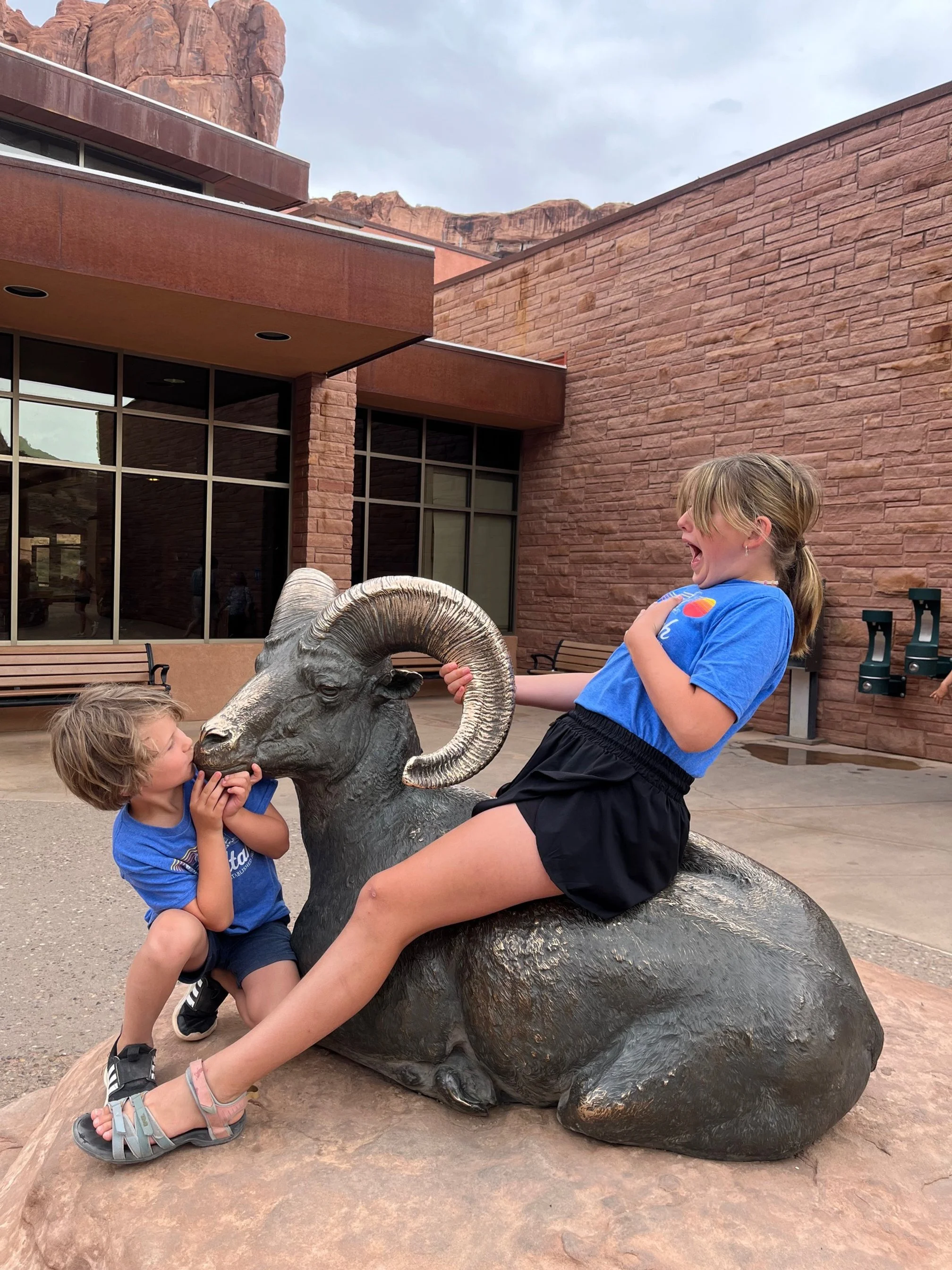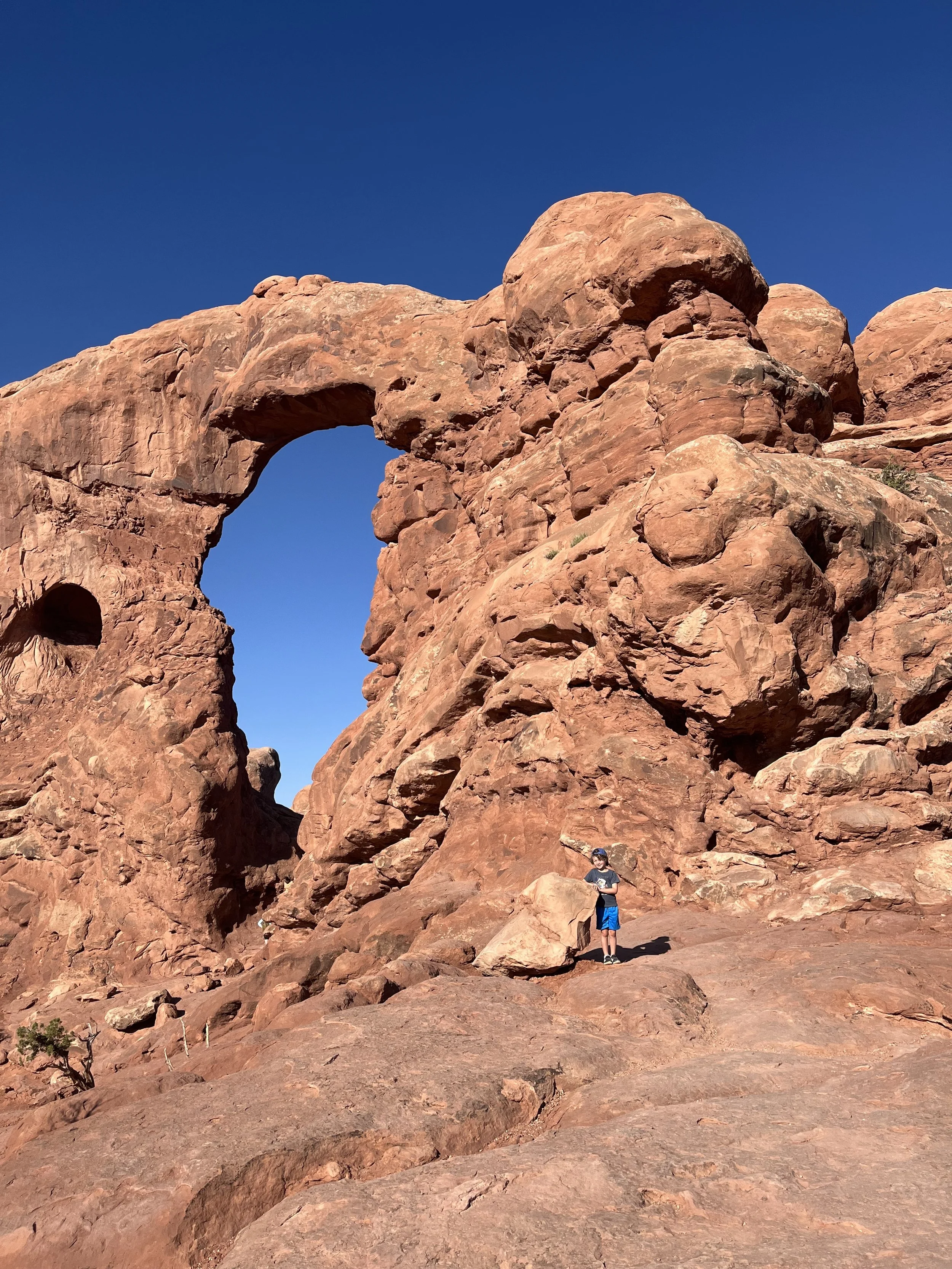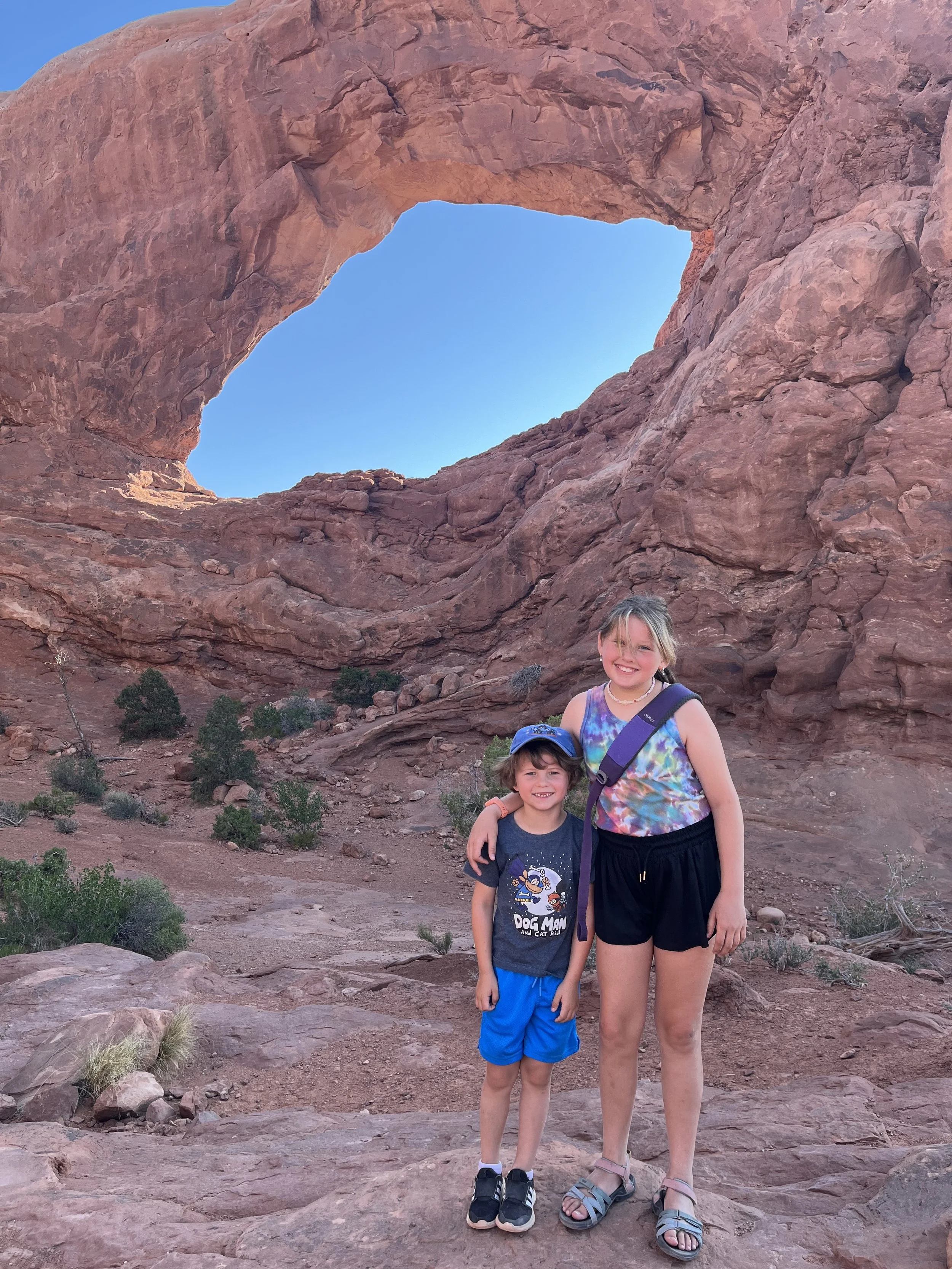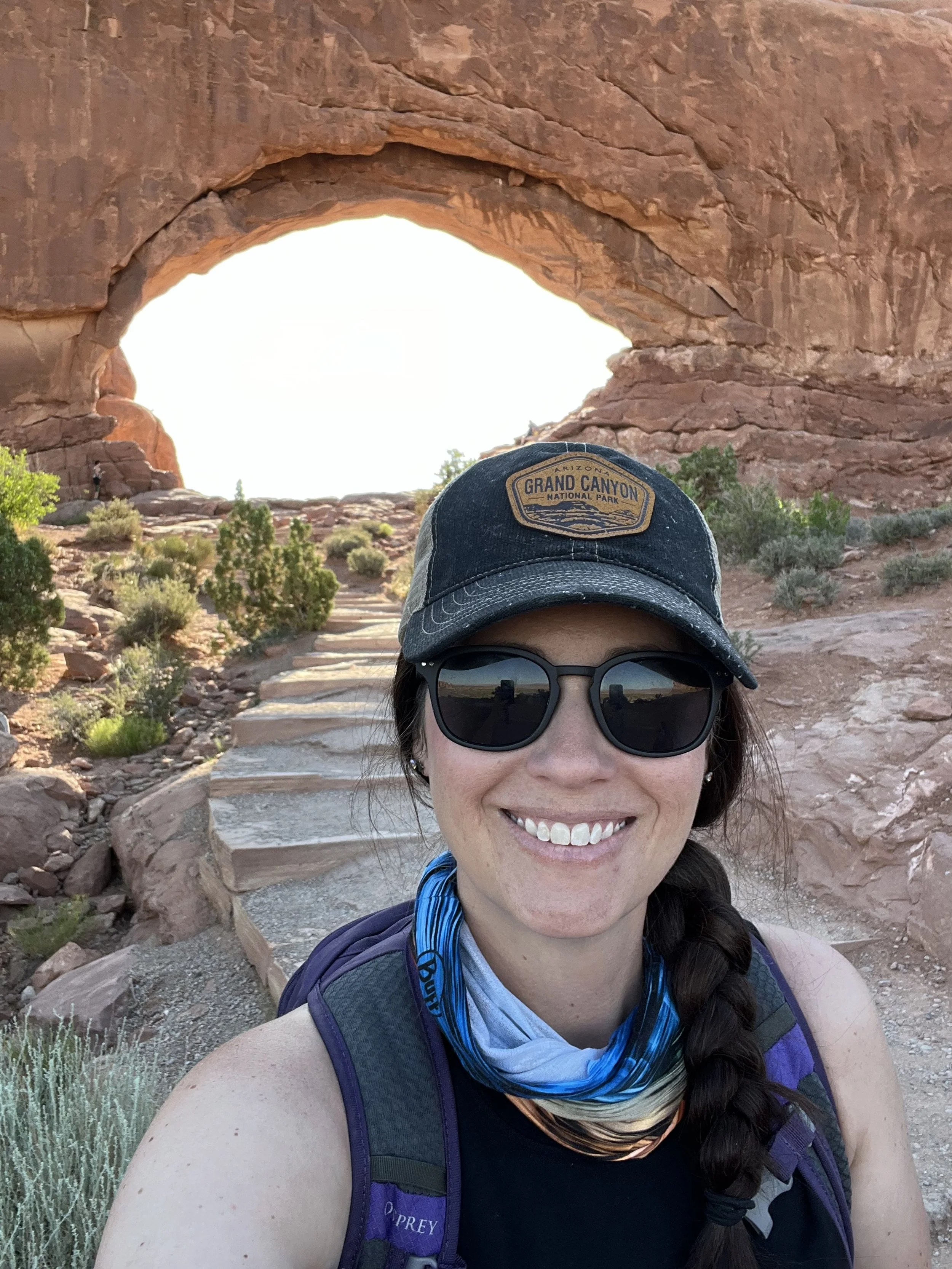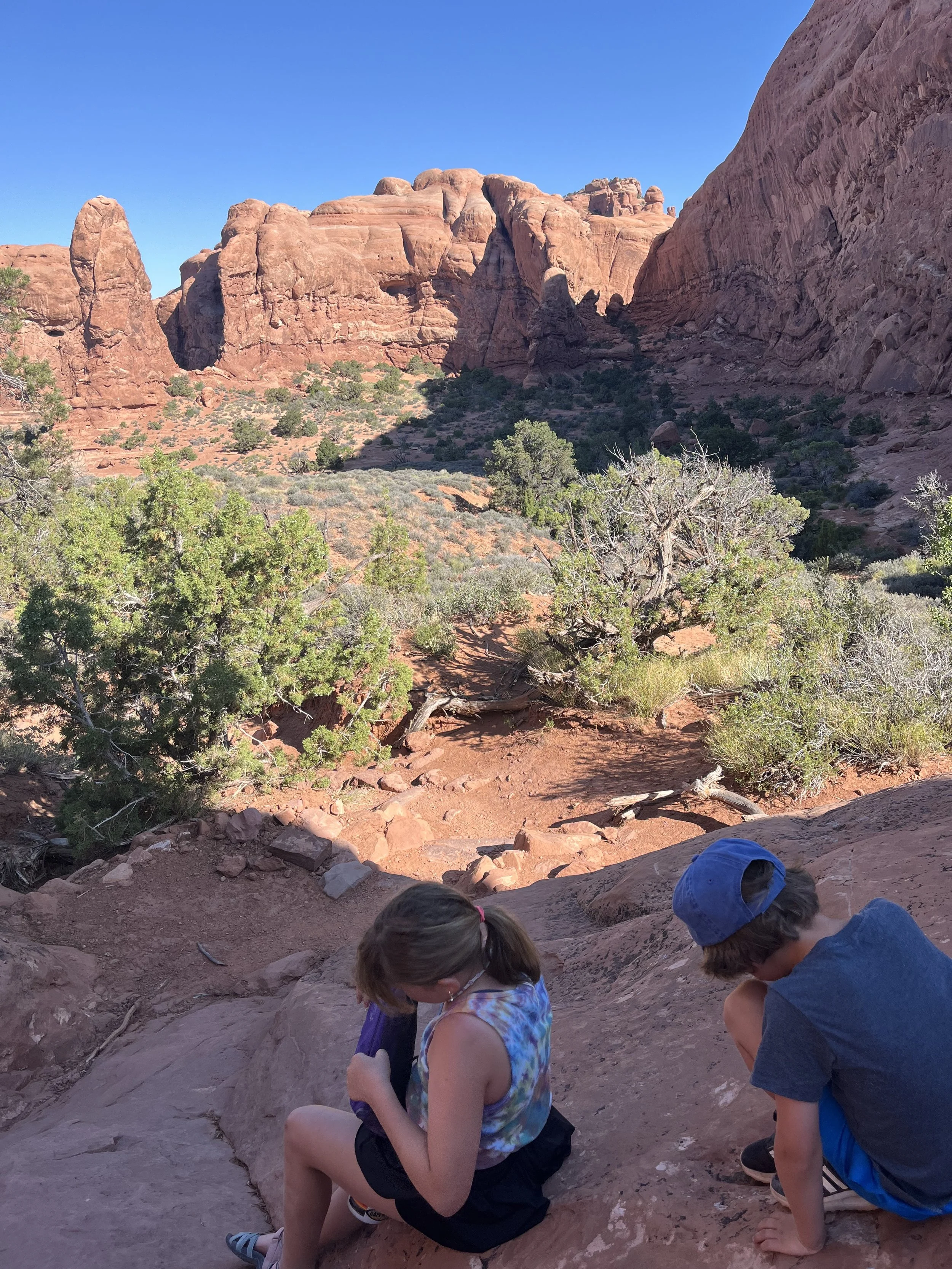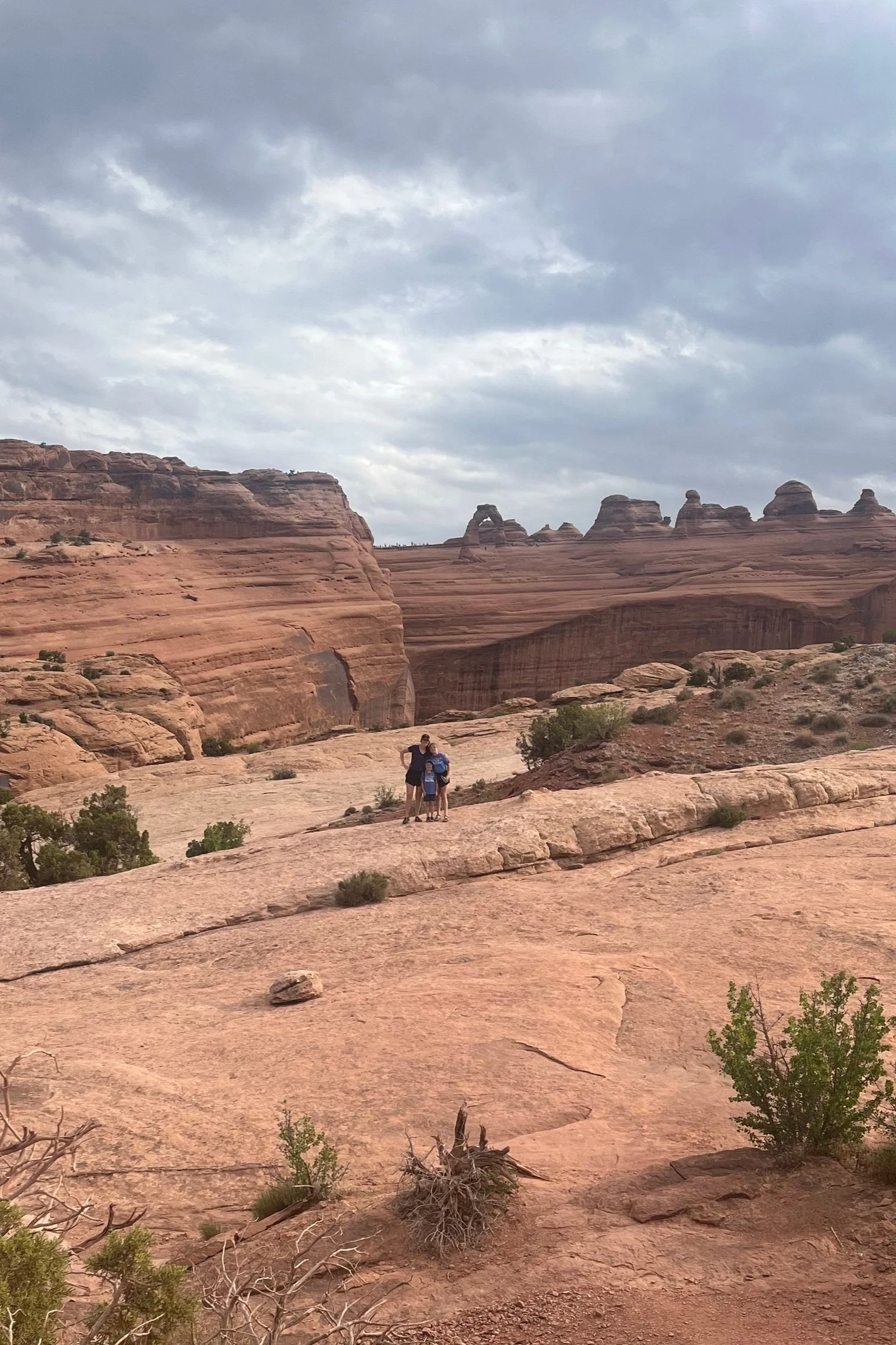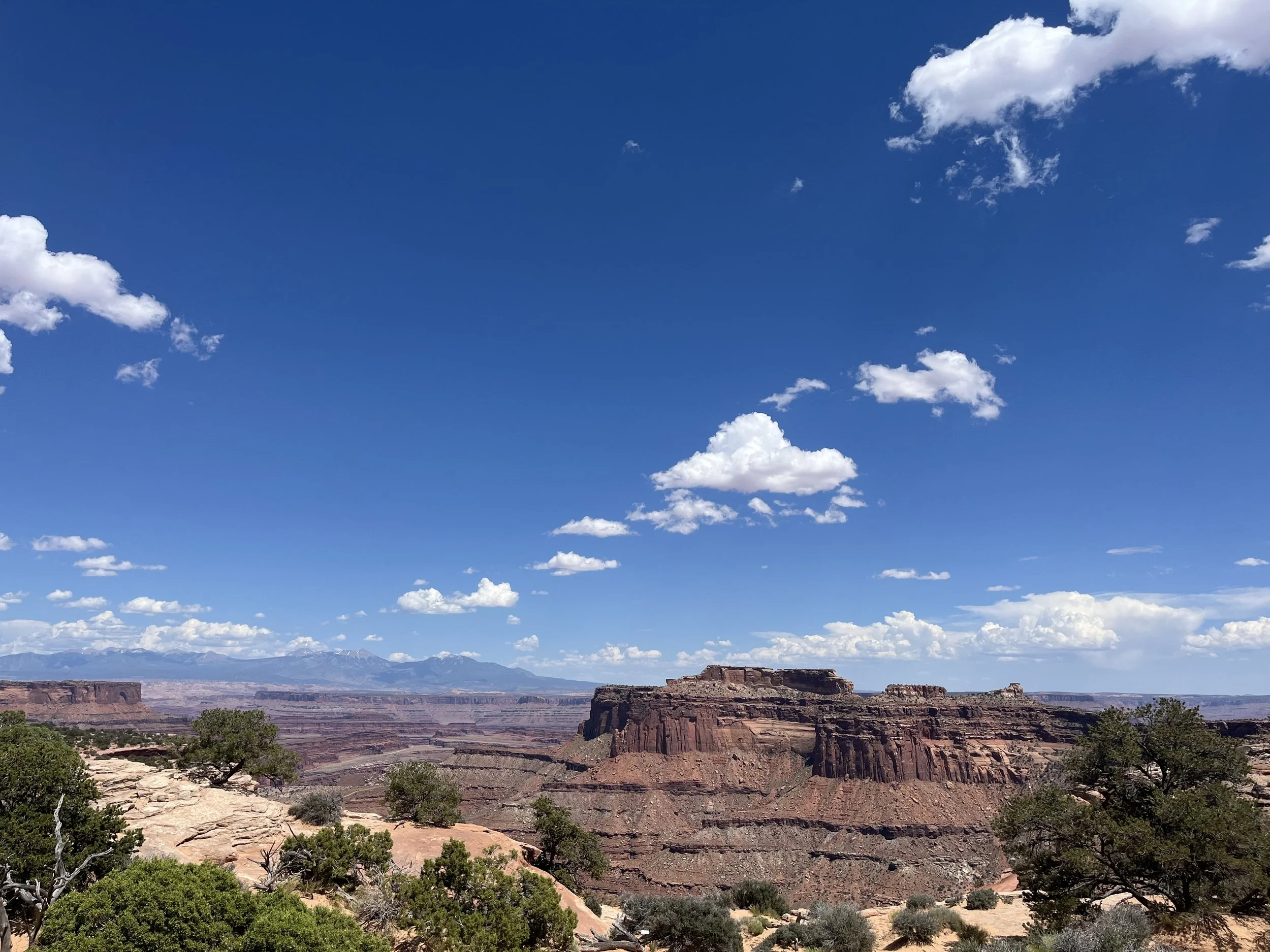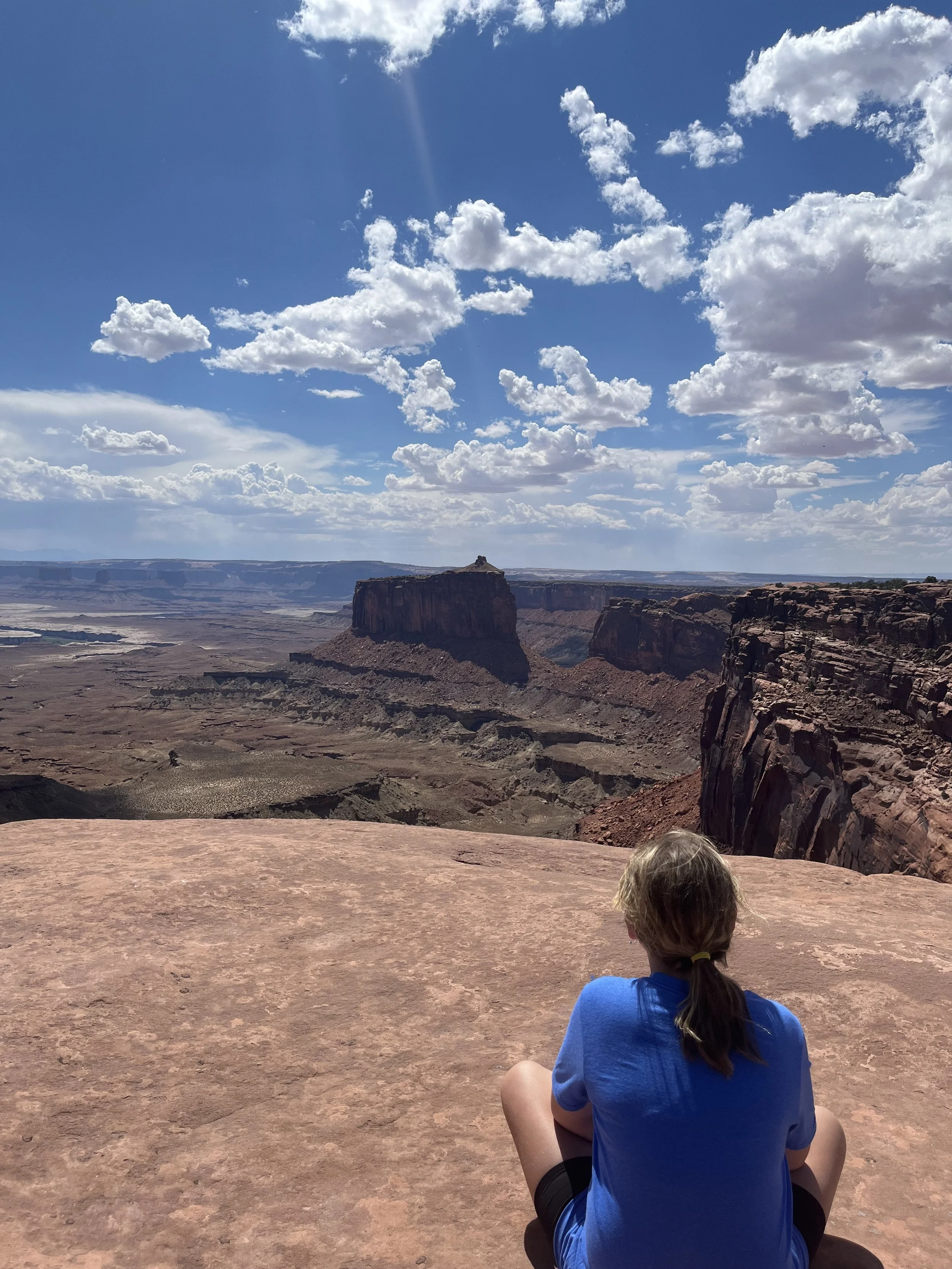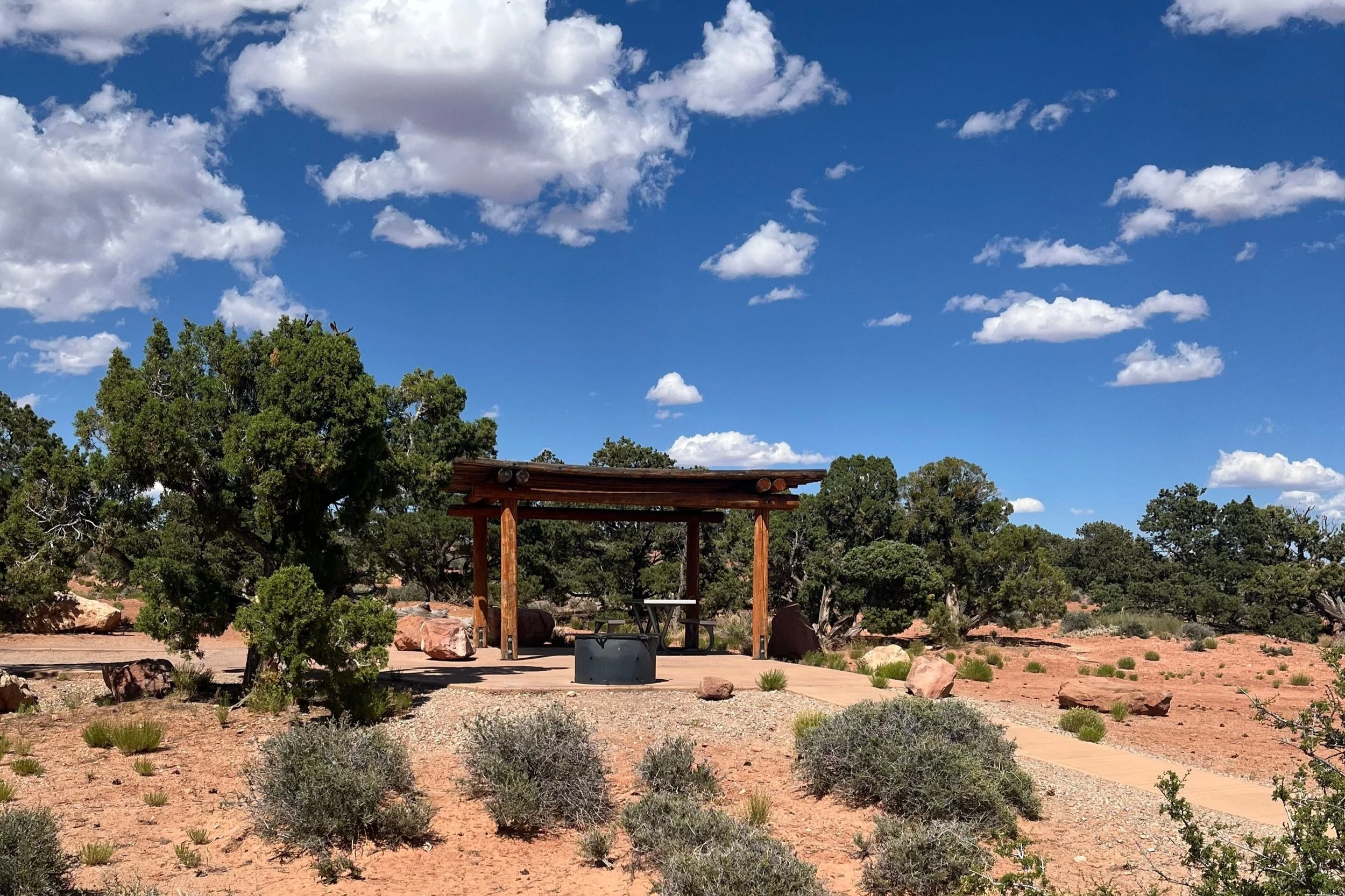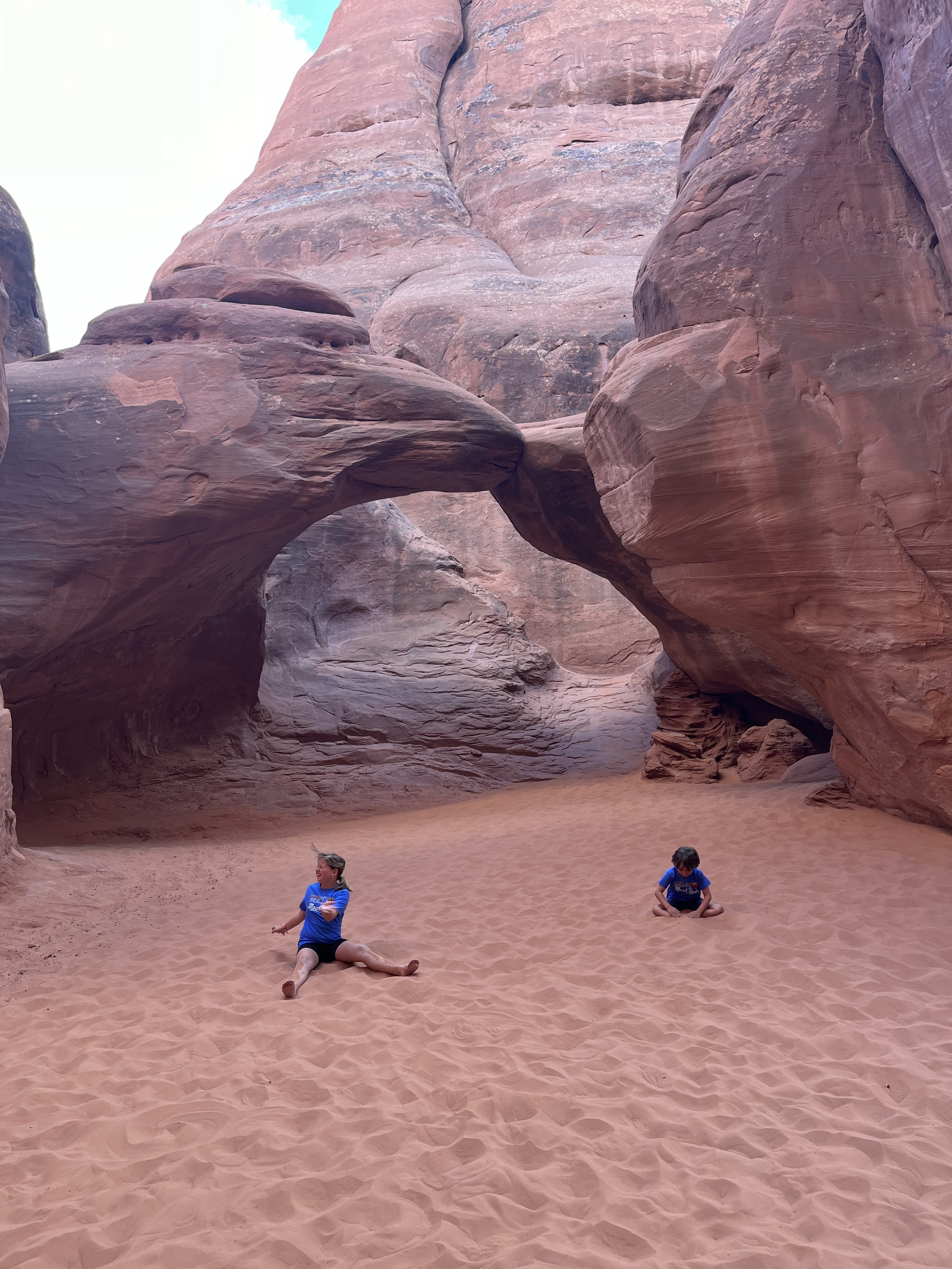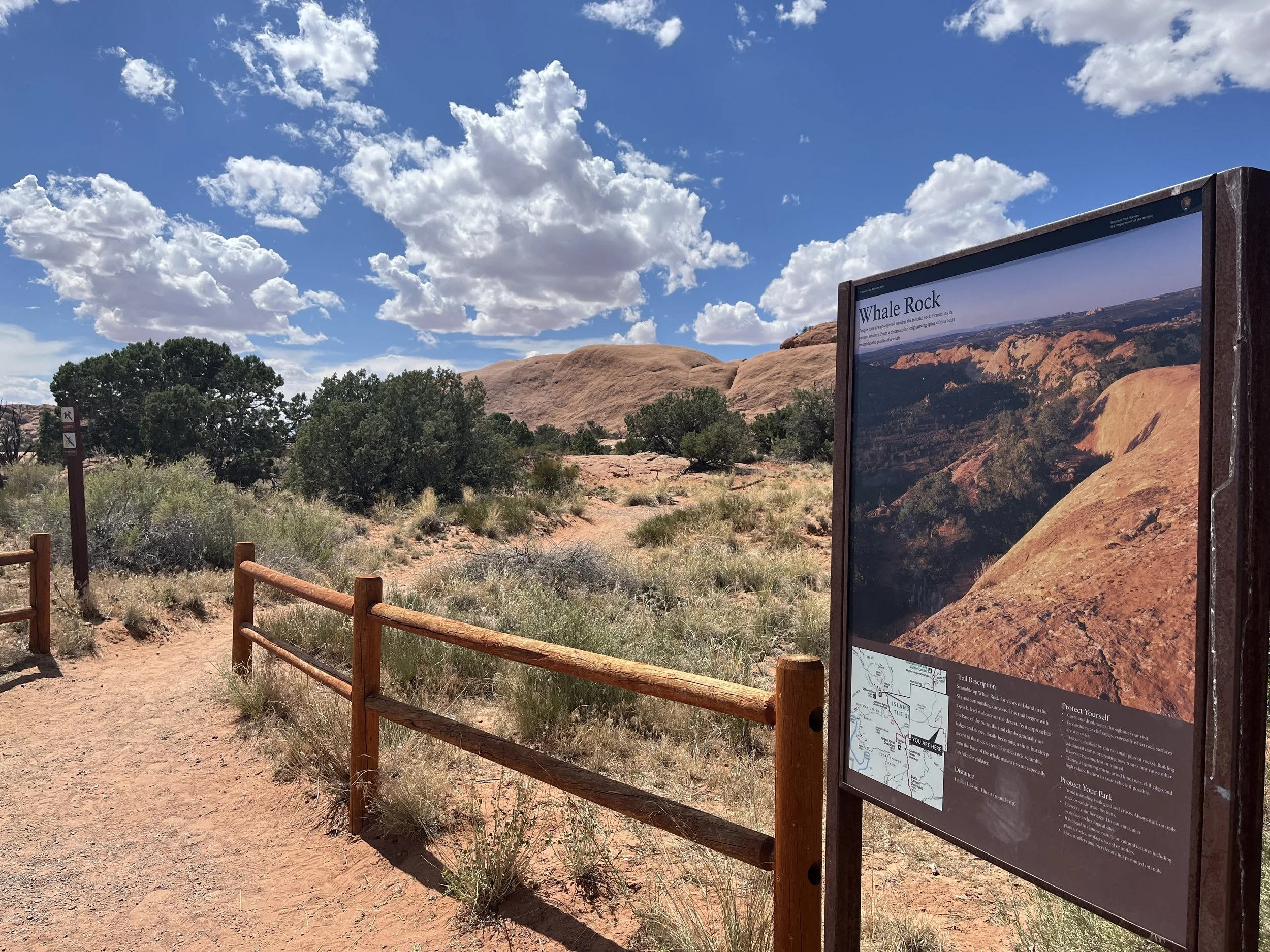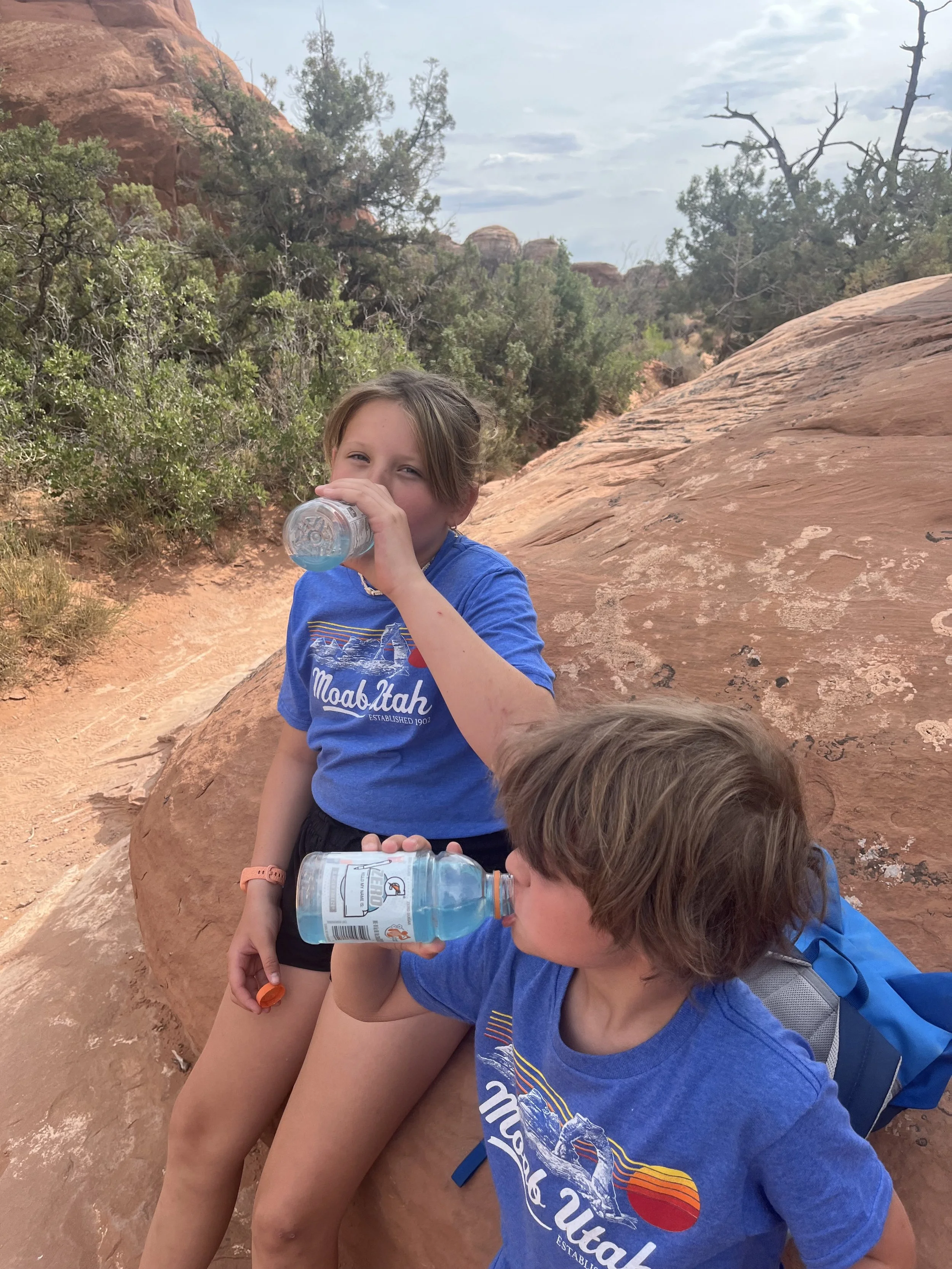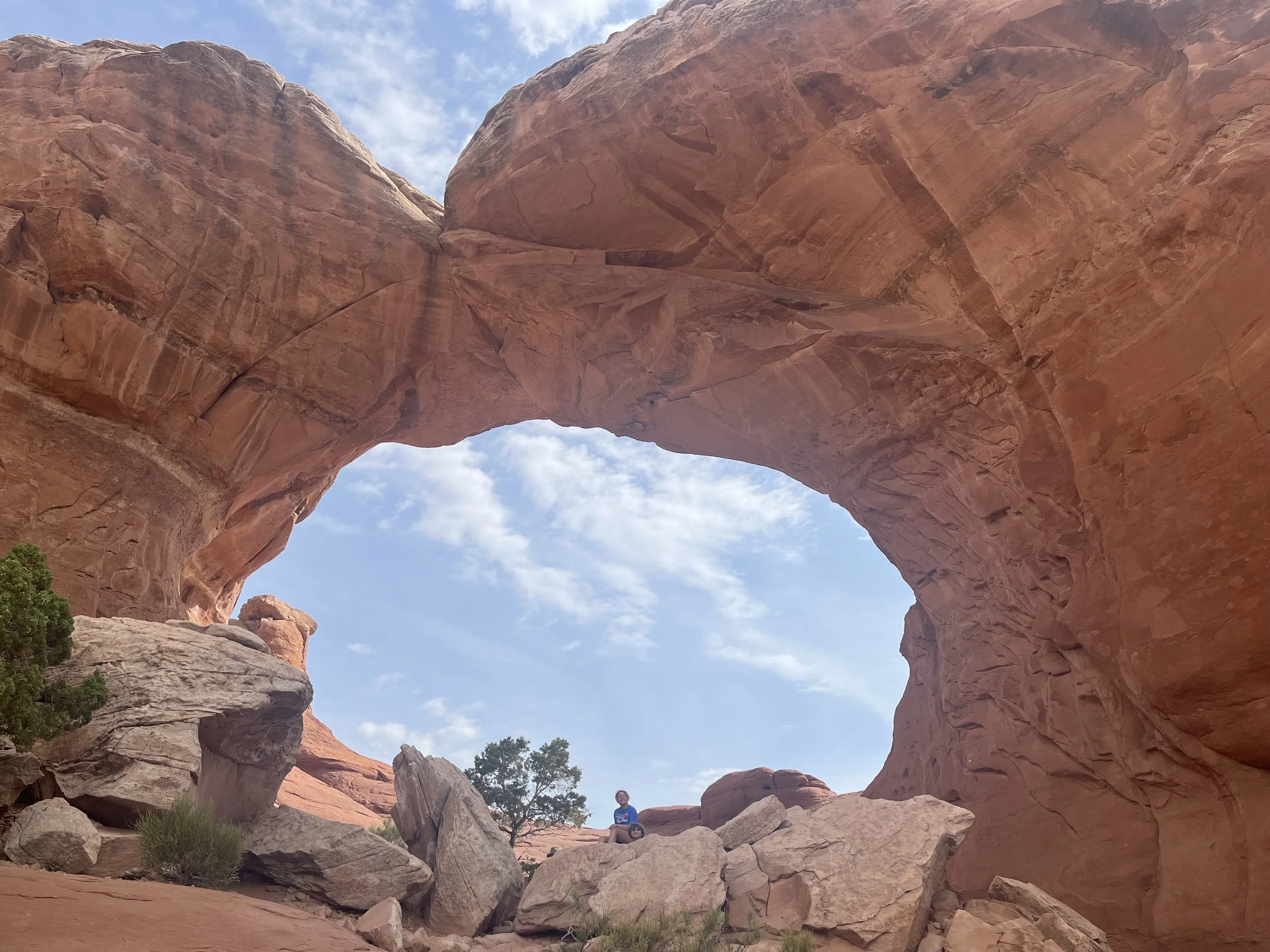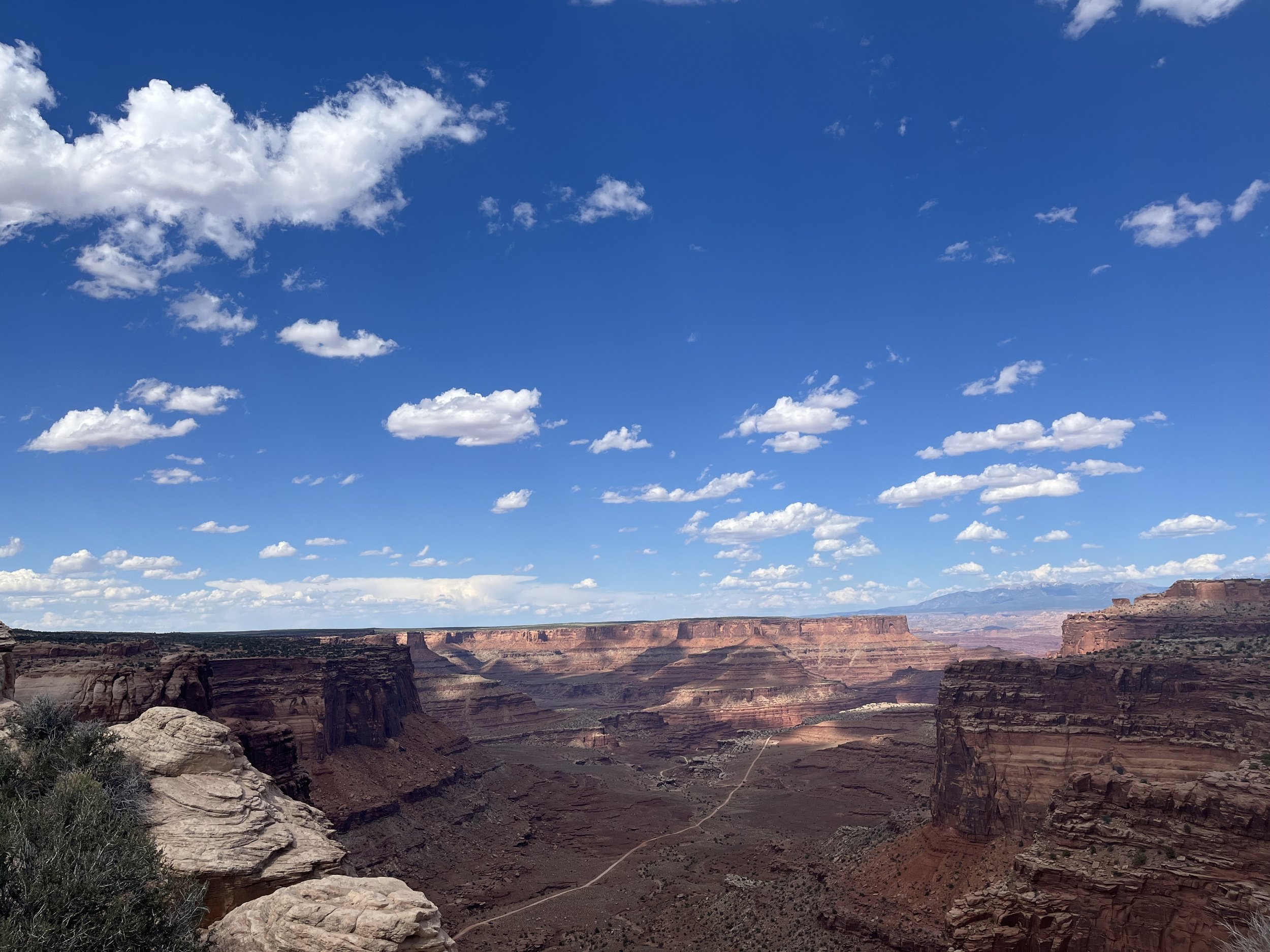Arches vs. Canyonlands: Which is Better?
Arches vs. Canyonlands: this is the big question you’ll have to ask while planning a trip to Moab, Utah!
While both parks are incredible, each has its own unique offerings to visitors looking for outdoor adventures.
Both are within easy driving distance of downtown Moab, making this area of Utah unique in its proximity to two different national parks.
Arches National Park is best known for its soaring red rock arches, while Canyonlands National Park is best known for its sprawling wilderness filled with challenging hikes and vast canyons.
My family loves both of these parks—and I think you should visit both, if possible.
But, if time is limited and you can only do one, you’ll be able to learn more about each national park below to find the best fit for your trip to Moab.
Windows Arch in Arches National Park (left) and Green River Overlook in Canyonlands National Park
This post contains affiliate links. If you purchase through the links below, I will receive a commission at no charge to you.
Arches vs. Canyonlands: An Overview
Given that the two national parks are so close to one another—less than 30 miles away at their closest point—you might think that Arches and Canyonlands would be fairly similar in their offerings.
Yet, these two parks couldn’t be more different.
Arches National Park is dominated by unique rock formations, and it has the world’s highest concentration of stone arches. These arches are formed slowly over millions of years as the desert wind carves out the softer stone over and underneath the arches.
Canyonlands National Park sprawls over 3 districts: Island in the Sky, the Needles, and the Maze. Each of these vast areas offers something unique, from river carved canyons to petroglyphs to hoodoos.
For suggestions on how to see both parks in a single day (which is manageable, but fast!), check out my 1 day Arches and Canyonlands itinerary.
Both are a part of the Mighty 5 national parks in Utah, which offer up some of the most incredible landscapes in the entire United States.
Check out my complete Utah Mighty 5 road trip with kids post here, and get hiking, camping, dining, and driving suggestions for a complete family vacation.
Highlights of Arches National Park
The author’s children at the Arches National Park sign at the visitors center
If you’re thinking about visiting Arches National Park, it’s important that you have a strong understanding of the park’s features, available hikes, and most famous spots.
Doing so will help you better weigh this park against Canyonlands.
Location of Arches
Arches National Park is conveniently located less than 5 miles north of Moab, Utah, on Highway 191.
From the downtown area of Moab, you can be at the front gates of Arches in under 10 minutes, which makes this park an excellent—and quick—addition to your time in town.
Annual Visitor Numbers and Reservations
Arches National Park sees more than 1.5 million visitors a year, most of whom visit in late spring and early summer.
Despite the huge number of people exploring this national park, the park only covers about 119 square miles, which is relatively small for one of the Western national parks. To put that in perspective, Yellowstone National Park is nearly 3500 square acres!
This means that there are a lot of people in a relatively small area during peak times, so parking lots and trails fill up quickly in the mornings.
In an effort to combat that overcrowding, Arches National Park has implemented a reservation system. To get into the park between 7 AM and 4 PM from April to October, you’ll need to book a daily reservation time slot ahead of your visit. This reservation is separate from the typical entrance fee.
You can purchase your reservation pass and select your entrance time at Recreation.gov.
Must Do Activities in Arches
Scenic drive
An easy way to get to know the park is via the 18 mile long scenic drive, which cuts through the heart of Arches National Park.
From here, you’ll be able to see several iconic elements within the park without leaving your car, including Balanced Rock, the Courthouse Towers, and the start of the Fiery Furnace.
Along the way, you’ll also be able to access major trailheads, turn off to the Windows Arch area, and pull over on the overlooks from the park’s main road.
Note that there aren’t any amenities, including gas or food, once you’re in the park, so you’ll want to ensure you have snacks and gas before you arrive.
Arches’ main road near the Salt Valley Overlook
Visitors center
This building at the start of the scenic drive is located just beyond the entrance booths.
The Camping Kiddos being silly outside of the Arches visitors center
It’s a great place to start your exploration of Arches National Park, as there are rangers on site to answer questions, hand out maps, and suggest hiking options.
I also recommend spending some time in the small but well done interactive museum area, where you’ll be able to learn more about the park’s history, major geological features, and the animals that call Arches home.
The park’s only store is located to in the left wing of the visitors center. This is where you can pick up shirts, books, stickers, stuffed animals, postcards, and posters to remember your time at Arches.
The store does get very busy in the last hour or so before closing, so I’d suggest shopping at the start of the day if possible.
If you like to collect NPS stamps like we do, you can find the stamp counter inside the visitors center near the entrance.
Before you leave, I highly recommend filling up your water bottles at the water fountains here. You’ll also find one of 2 flush toilets in the park next to the visitors center. (The only others are in the Devil’s Garden Campground at the back of the park.)
Outside the center are metal sculptures of native animals, which are great for photo ops. Your kids will absolutely want to climb on them, which is fine—just make sure the metal isn’t too hot.
You can also do a quick hike through the native plants garden, located right behind the visitors center.
Overlooks
While Arches National Park doesn’t have the dramatic scenery of some of Utah’s other national parks, there are still some stunning overlooks along the main road.
The La Sal Overlook give visitors a beautiful glimpse at the nearby La Sal mountains to the south of Moab. The snow topped peaks contrast with the red desert of Arches National Park. Aim for a clear day around sunset for the best light.
Panorama Point brings a little bit of everything in the park together in one easily accessed spot.
The Salt Valley Overlook is one of my favorites as you’ll get to see the wide expanse of Arches, much of which isn’t accessible to visitors. Located just before the parking lot for Fiery Furnace, this overlook usually isn’t very busy, but has some of the best long range views of the park.
Camping
If you’re interested in staying inside Arches National Park, you have just one option: the Devil’s Garden Campground at the back of the park.
It is easily accessible via the paved main road through the park. You can reserve spaces from April to October; otherwise, it’s first come first serve. You’ll see the La Sal Mountains, parts of Fiery Furnace, and
There aren’t any hook-ups here, so be prepared to boondock. You’ll find vault and flushing toilets here for the campground as a whole, while individual spaces have potable water, grills, and picnic tables.
Hiking in Arches
If you’re looking to hike near Moab, Arches National Park has some great options.
Park Avenue is one of the park’s most popular hikes, and is located just a few miles from the entrance. Here, you’ll be able to see the red rocks and spires that Arches is known for up close as you descend on the one way trail to the Courthouse Towers viewpoint.
Located near the middle of the park, Fiery Furnace is challenging in that there’s no set trail through this maze of rock scrambles, sandy trails, and towering rock walls.
For first time visitors, you’ll want to book one of the ranger-led hikes through this section of the park as it is easy to get lost. Otherwise, you’ll need a permit to access this beautiful but tough trail.
The author and her kids at the Upper Viewpoint for Delicate Arch
Windows Arch Loop is one of the most iconic areas of the park, with multiple arches accessible by paved trail.
You’ll be able to see both North and South Windows Arches, as well as Turret Arch and Double Arch.
Take the primitive trail around the back of Windows Arch for fewer crowds.
Delicate Arch is another must-do hike in the park.
There are a couple of ways to see Delicate Arch depending on your ability and time outlay.
There is a lower viewpoint that requires a short, flat walk from the parking lot. This options literally takes about 5 minutes, but you won’t have much of a view.
At that area, there’s also a higher viewpoint where you can see the Delicate Arch from across a canyon. This is the second best option if you can’t do the full 3-mile hike to Delicate Arch. There is significant elevation gain on this short hike.
Finally, you can do the full Delicate Arch hike, which is the most strenuous option, but also allows you to get closest.
Limited on time? Check out our itinerary for 1 day in Arches National Park!
Highlights in Canyonlands National Park
Me, my kids, and my dad at the entrance sign near Islands in the Sky
Welcome to Utah’s least visited national park! Canyonlands National Park has 3 different districts to explore, and each is isolated from the others.
First, you have Islands in the Sky, which has the most amenities and the most visitors. Then, there’s the Needles, which still has a visitors center and basic infrastructure. Finally, you can explore the Maze, which has zero infrastructure and is placed in one of the most remote sections of Utah.
Location of Canyonlands
Because Canyonlands is sprawling, you’ll need to determine which districts you’d like to visit. Each one is a completely separate unit, divided by rivers, and they cannot be accessed by car or on foot from the others.
Islands in the Sky is located northwest of Moab on 313. Here, you’ll find a visitors center, bookstore, ranger programs, and paved roads leading to a wide variety of trailheads and hikes. Islands in the Sky’s paved roads truncate at three points: Upheaval Dome, the Green River Overlook, and Grand View Point Overlook.
The Needles district is located southwest of Moab and requires a 90 minute drive from Moab on 191 and then 211 to access. You will find a visitors center here, a paved scenic drive, 60 miles of hiking trails, and multiple overlooks. Hiking into the Needles backcountry is best done on a guided hike.
Finally, the Maze district is only accessible via high clearance 4x4 vehicles on dirt roads, or via boat drop on the Green River. There are no visitors centers here or paved roads. If coming by car, you’ll need to access the district through the Glen Canyon Recreation Area. One of the best ways to see this section of Canyonlands is with a guided rafting tour of Cataract Canyon.
Annual Visitor Numbers and Reservations
Despite its proximity to Moab, Canyonlands receives just over 900,000 visitors each year—and that’s in all THREE of its districts.
These low visitor numbers combined with the park’s sprawling 530 square miles means that you’re much more likely to find some solitude here than at Arches.
That being said, areas of Canyonlands’ Islands in the Sky district can get busy enough for parking lots to fill, so you will want to go early during the late spring and early summer.
Canyonlands National Park currently does not have a need for a reservation system, so you do not have to plan ahead to visit the park. The park is open 24 hours a day, but the visitors centers for Islands in the Sky and the Needles change with the seasons.
Must do activities in Canyonlands
Long range views across from the visitors center in Islands in the Sky district of Canyonlands
Scenic drives
There are 2 paved, easily accessible scenic drives in Canyonlands.
The first is along 313 in Islands in the Sky, which will take visitors to the Grand View Point Overlook.
The other is located in the Needles District on 211, and passes by the visitors center before ending at the Big Spring Canyon Overlook.
There are multiple other scenic drives that are accessible only by high clearance 4x4 vehicles in the park, but you won’t want to do these on a whim. The unpaved scenic routes like the Shafer Trail and White Rim (both in Islands in the Sky) require specific planning to ensure the safety of your vehicle and passengers.
Visitors Centers
We love starting at the visitors centers for national park visits as these are perfect for getting the lay of the land, picking up Junior Ranger booklets, and asking questions of the rangers. If you’re a beginner to the national parks, these are excellent places to start!
Canyonlands has 2: one in Islands in the Sky and another in the Needles. Neither is particularly large, but you will find a small gift shop in each, toilets, on-duty rangers, and interpretive materials.
Given how expansive Canyonlands is, I’d recommend a stop at one—or both—of these centers to get updated maps and chat with the rangers about trail openings and general park safety.
Overlooks
The author's daughter at Holeman Spring Canyon Overlook
If you’re looking for an awe-inspiring overlook, Canyonlands does these better than Arches, hands-down.
Much of the Islands in the Sky district is on the top of a mesa, so the views into the canyon below are incredible.
Shafer Canyon Overlook near the visitors center is excellent, as it provides perspective for the vast expanse before you. At first, it seems like the far cliffs can’t be far, but then you’ll see a car working its way down the Shafer Trail below you, and it looks like a tiny toy. And that’s when you realize just how big Canyonlands is.
Green River Overlook is spectacular and a must see. (Just don’t be like this guy we saw who climbed over the safety railing and was taking a selfie while standing inches from a 1400 foot drop. Oof.) There is plenty of parking here; even if the parking lot is full, people come and go regularly, so be patient and a spot will open up.
Holeman Spring Canyon Overlook is also a must-do, and it’s far less crowded than Green River. There’s a small pull-off for you to get out and snap some photos.
Grand View Point Overlook puts the canyons below much closer than the other overlooks, and you can even spot features from the park’s 2 other districts from here.
Camping
One of the sites in the Willow Flats Campground in Canyonlands
Canyonlands has 2 campgrounds: one in Island in the Sky (Willow Flats) and one in the Needles. Compare Willow Flats to our private campground recommended in Moab in our best RV campgrounds in Utah national parks guide!
The Needles Campground is twice the size of Willow Flats with 26 sites. The Needles Campground also has potable water, while you’ll need to bring in your water at Willow Flats. Both have toilets, fire pits, and picnic tables.
Hiking in Canyonlands
There’s hiking a plenty in Canyonlands National Park with options ranging from short, kid-friendly hikes to days-long backpacking routes.
First time visitors should plan on doing a couple of shorter hikes as this is the best way to see the park. We love the iconic Mesa Arch Trail in Islands in the Sky, which is a 0.7 mile loop to a pretty arch overlooking the canyon.
Pothole Point Trail in the Needles is just over a half mile loop with unique, pothole-based ecosystems along the way.
There are many longer trails, too, including the Syncline Loop (in Islands in the Sky) and Druid Arch (in Needles).
(For more details, see the section about hiking in both national parks, below.)
Which Moab national park is better for kids?
Because Arches National Park is so accessible for the average family, it wins out slightly in this category.
The proximity to Moab means that Arches is a natural fit for a family vacation stop in this area, and there are many beginner hikes to get your kids excited about being outdoors.
It would be hard to bring your kids to this area of Utah and not take them to see the iconic and unique rock arches that the park is known for. My kids were awed by the arches: we’ve seen other rock formations and even other arches, but there’s nowhere else in the world where you can see so many of them in one place.
That being said, do NOT sleep on Canyonlands if your family is spending more than a day in Moab. You might think you’ve seen canyons before, but the vastness of the canyons in this park rivals something like the Grand Canyon.
Because of the sprawl of Canyonlands—and the remoteness of much of the park—the average family is going to feel less confident in seeing this entire park than they are Arches. You should still go to (at the very minimum) Islands in the Sky which makes for a good day trip from Moab.
We’ve found that the immediacy of the huge arches from quick hikes off of the main park road in Arches National Park worked better for our younger kids than the longer, more in-depth hikes at Canyonlands.
>> Read our complete guide to Arches National Park with Kids here. <<
There were several areas that my kids really enjoyed in Canyonlands, including the Green River overlook, Mesa Arch trail, and Whale Rock trail that were highlights for us.
I think that older kids and teenagers will be able to appreciate the vastness of Canyonlands, while younger kids will find visually striking places like Sand Dune Arch at Arches more memorable.
>> Read our complete guide to Canyonlands National Park with Kids here. <<
The trailhead for Whale Rock Trail in Canyonlands’ Islands in the Sky
Which is better for hiking: Canyonlands or Arches?
While Arches has some beautiful hikes, Canyonlands wins out here due to the huge variety of hike lengths and opportunities.
One of most challenging hike at Arches National Park is Fiery Furnace, which requires rock scrambles, tight squeezes, and some creative wayfinding. However, it’s usually completed in a few hours. It’s fun and unique, but it showcases the limitations of hiking in Arches.
The longest hike in Arches is the Devil’s Garden Primitive Loop, which takes hikers through 7.2 miles of red rock canyon, past multiple arches, and through a hoodoo garden. The section of trail that’s primitive requires a close eye to cairns and tracks of previous hikers, making this the most remote part of the hike.
There are a variety of shorter hikes, including Park Avenue, Broken Arch, and Delicate Arch, but most of the park’s trails are under 4 miles round trip. That’s great for families and the average hiker, but those who are looking to backpack in and/or do more challenging hiking are going to need to look outside of the park.
Ultimately, Arches’ hiking trails are limited by the smaller size of this park.
Canyonlands, and its three districts, offer more hiking than one could dream of doing on a lifetime of trips to the park. There are hundreds of miles of trails throughout Canyonlands, making this a world-class hiking destination.
Canyonlands has a wide variety of shorter hikes, including Whale Rock Trail, White Rim Overlook, and Mesa Arch Trail. There are also dozens of longer hikes, too, including the 10 mile Chesler Loop Trail, the 10 mile Druid Arch Trail, and the 8 mile Syncline Loop.
If you’re looking for a multi-night trip, you could easily spend a week backpacking in the extremely remote Maze district of the park (located near Hanksville, UT). Keep in mind that there are no amenities in this part of the park—no potable water, toilets, or even a visitors center—so you need to be well versed in desert hiking to attempt any excursion into this area.
Is Arches or Canyonlands better to visit in the summer?
The summer is brutal in Moab, and you’ll regularly see temperatures in the 90s and low 100s. (And don’t say it’s a dry heat. At those temperatures while outdoor recreating, it’s dangerous with or without the humidity.)
Trying to beat the heat with some hydration and a tiny amount of shade on the Broken Arch Trail in Arches National Park
You’re going to have to negotiate around the afternoon heat in both parks, as both have limited shade throughout the properties.
I will say that Arches is slightly better to visit in the summer simply because of its location. If you come for a hike or two in the morning, and are ready to get out of the head by 12 or 1 PM, it’s an easy drive into Moab for lunch or back to your campground to rest.
Canyonlands’ closest district to Moab is still about 45-50 minutes drive time away from the town, so you’re most likely there for the duration. That means you need to really prepare for that mid-day heat with frequent periods of rest, lots of water, and appropriate clothing.
If you did want to get out of the summer sun while in Canyonlands, your only options are the visitors center or your car.
Plus, with Canyonlands having such great longer hikes, you will need to wait for cooler weather to do those safely. There are a few hikes in Arches with some shade from the nearby rocks, including Sand Dune Arch, Fiery Furnace, and Park Avenue.
Overall, though, do yourself a favor, and come to the parks in spring (late March-early May) or fall (late September-early November).
For more tips on hiking in the summer at Arches—which also apply to Canyonlands for the most part—check out my complete guide.
Explore how to manage your time in and around Moab with this 3 day Moab itinerary.
What to bring to Arches and Canyonlands
Whether you plan to visit one or both parks, you’ll need to prepare. Both have few amenities beyond the visitors center, and both parks are far enough from Moab that you won’t want to make a trip back to pick up forgotten items.
Here are the things you should pack for exploring both national parks.
Food
The park does not have any sort of snacks or food for purchase, so you’ll want to bring everything you need for the day with you.
The weather in Moab is hot and dry, so you’ll sweat a lot when visiting in the spring, summer, and early fall. Prepare for that fact by stocking up on foods that will help you replenish those lost electrolytes: any salty snack is good (including chips!).
Be sure to pack heartier fare, too, as backtracking out of the park is going to be a pain. We’ve found that sandwiches, pasta salads, fruit, and granola bars make for a filling but quick lunch.
Cooler
To help with your food and drinks, be sure to pack a cooler with ice before you head into the park.
Not only does this open up new options for snacks and meals, but you’ll also have the best treat of all after a hike: an icy cold drink.
If you need to buy a disposable cooler, you can find one in Moab at the City Market.
Gas
Don’t start the day on empty, or you’ll be in trouble by the day’s end. While Arches is closer to gas stations than Canyonlands, you will still have to drive 18 miles through the park and then an additional 5 to get to the closest station.
Canyonlands has a much longer trek, with the closest gas station sitting at about 40 miles from the Islands in the Sky visitors center.
Unlike other national parks (like Petrified Forest National Park) that have gas stations inside, you’ll need to go into Moab for gas. There’s no gas inside Arches or Canyonlands.
Hiking day pack
Stay hydrated with snacks on hand with a hiking day pack. Even if you plan to stick to some of the shorter hikes in the park, you’ll want to ensure that you have a good day pack that you can take with you.
If you did manage to wander off trail, you’ll want to ensure that you have your food, water, and GPS with you.
I have an Osprey Daylight that I use for my day pack, which works well for shorter hikes. I carried that bag with me throughout our most recent visits to both Arches and Canyonlands, and it worked well.
It’s big enough to put all of the things that the kids and I need during a hike (our Garmin Inreach Mini, snack bars, cell phone, first aid essentials), but small enough to be lightweight for a shorter day hike.
Extra water
If you plan to take a hike in either of these parks especially in the summer, please (please!) take at least twice the amount of water you think you’ll need. In the summer of 2024, a dad and daughter tied from exposure and dehydration while hiking in Canyonlands National Park’s Island in the Sky district.
Your hiking pack should include a water bladder; fill it up before you leave for your hike. A 2-2.5L water bladder should work for most people for a day hike, but anticipate your specific needs.
Keep cold water in your cooler in the car for additional resources.
There are areas in both Arches and Canyonlands to fill your water in/near the visitors centers. Beyond that, water is scarce, so come prepared.
Hiking shoes
Other than the paved nature trail at Arches and the Windows Arch loop (also at Arches), you are going to be hiking on a combination of sand and rock in these parks.
Tennis shoes are not going to be able to provide the appropriate grip on the slick rock scrambles, and flip flops are even worse.
When hiking in the desert, I prefer to wear my Keen Newport H2 hiking sandals, which have a closed toe and back strap, but holes along the side for ventilation.
Hat
Desert hiking is one of my favorite outdoor activities, but it’s also brutal during the warmer months. Unlike hiking in a forest, where there’s a tree canopy to help block some of the direct sunlight, desert hiking means that you have no relief from the sun.
There simply aren’t trees that grow large enough out here to provide any real shade, so you’ll need to bring your own. I recommend a wide brimmed sun hat or a baseball cap to help protect your scalp, ears, and face from the sun while hiking in both Arches and Canyonlands.
Final Thoughts on Arches vs. Canyonlands
If you only have one day in Moab to devote to one of the nearby national parks, I’d suggest spending that time at Arches, purely because the park and its rock formations are so iconic.
The Camping Kiddos at Broken Arch in Arches National Park
Plus, Arches is just a few miles from downtown Moab, making it really easy to add onto a quick visit.
Arches is also a smaller park, so you’ll get to see more of it in a shorter period of time.
If you’ve got a bit more time in the area, you absolutely should add at least a day in Canyonlands National Park, too. I’d recommend doing the Island in the Sky district if you have limited time as this is the closest to Moab and has the most infrastructure of the park’s 3 districts.
The Shafer Trail heading deeper into the park at Canyonlands’ Island in the Sky district
If you have more time or really want to get off the beaten path, the Needles is the second most accessible from Moab, though you’ll need to venture about 90 minutes south of the city to access that district.
For first time visitors to the Moab national parks, I don’t recommend doing the Maze district of Canyonlands because it is far more remote and difficult to access than the casual visitor would be able to tackle in a day or two.
Ultimately, you can’t go wrong with either Arches or Canyonlands, and a trip to either (or both!) will be a highlight in your trip to Utah.




